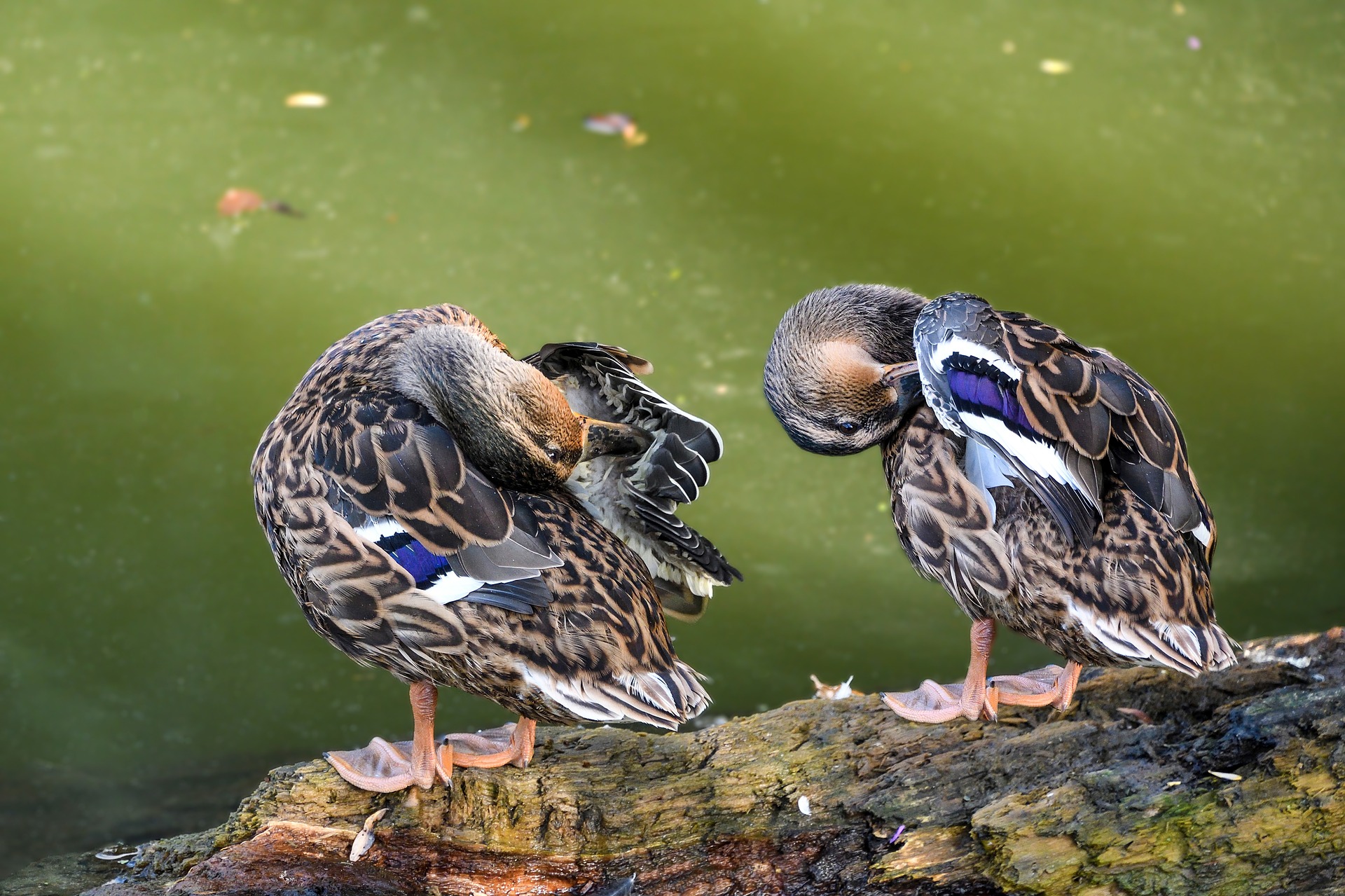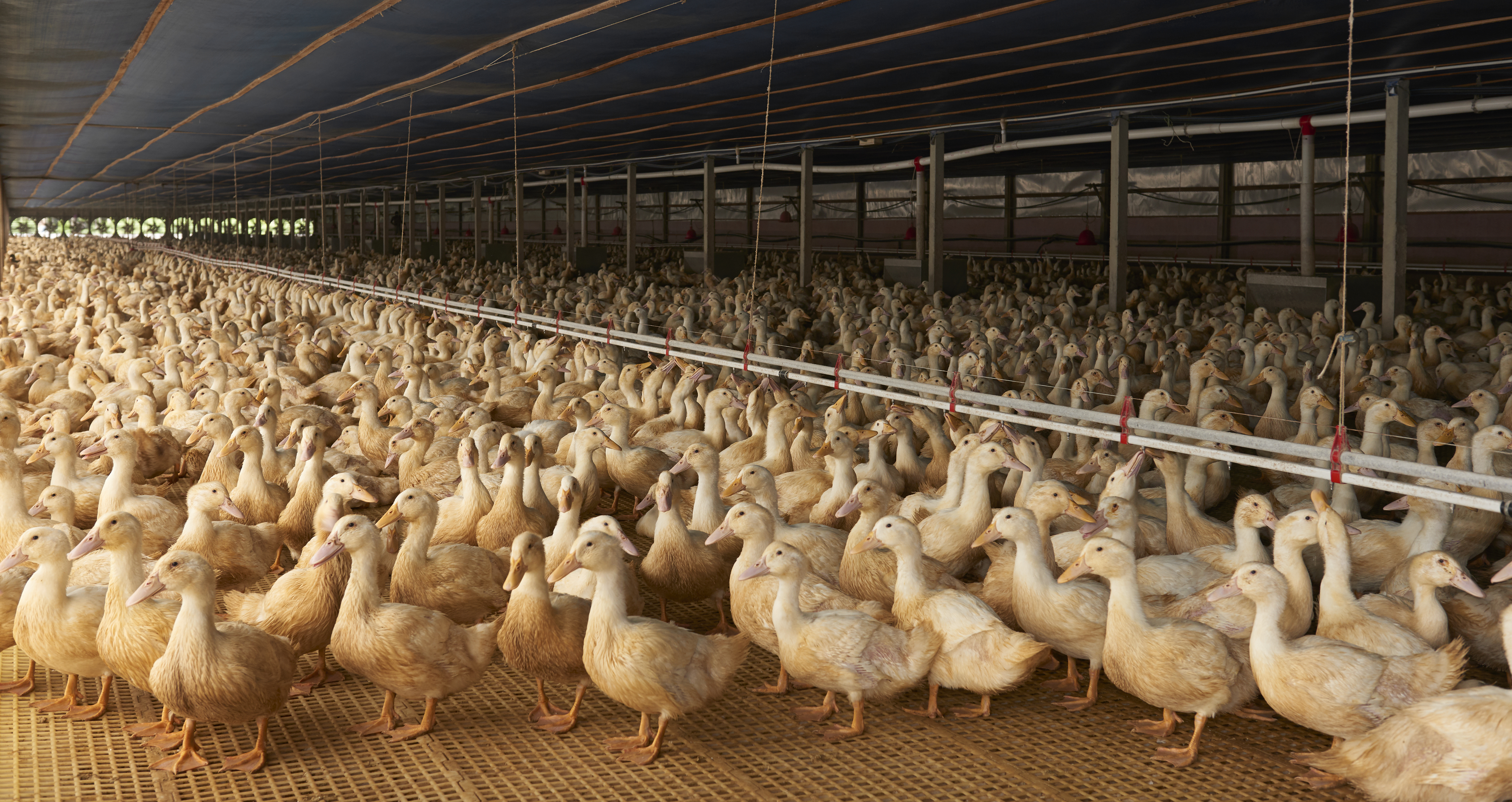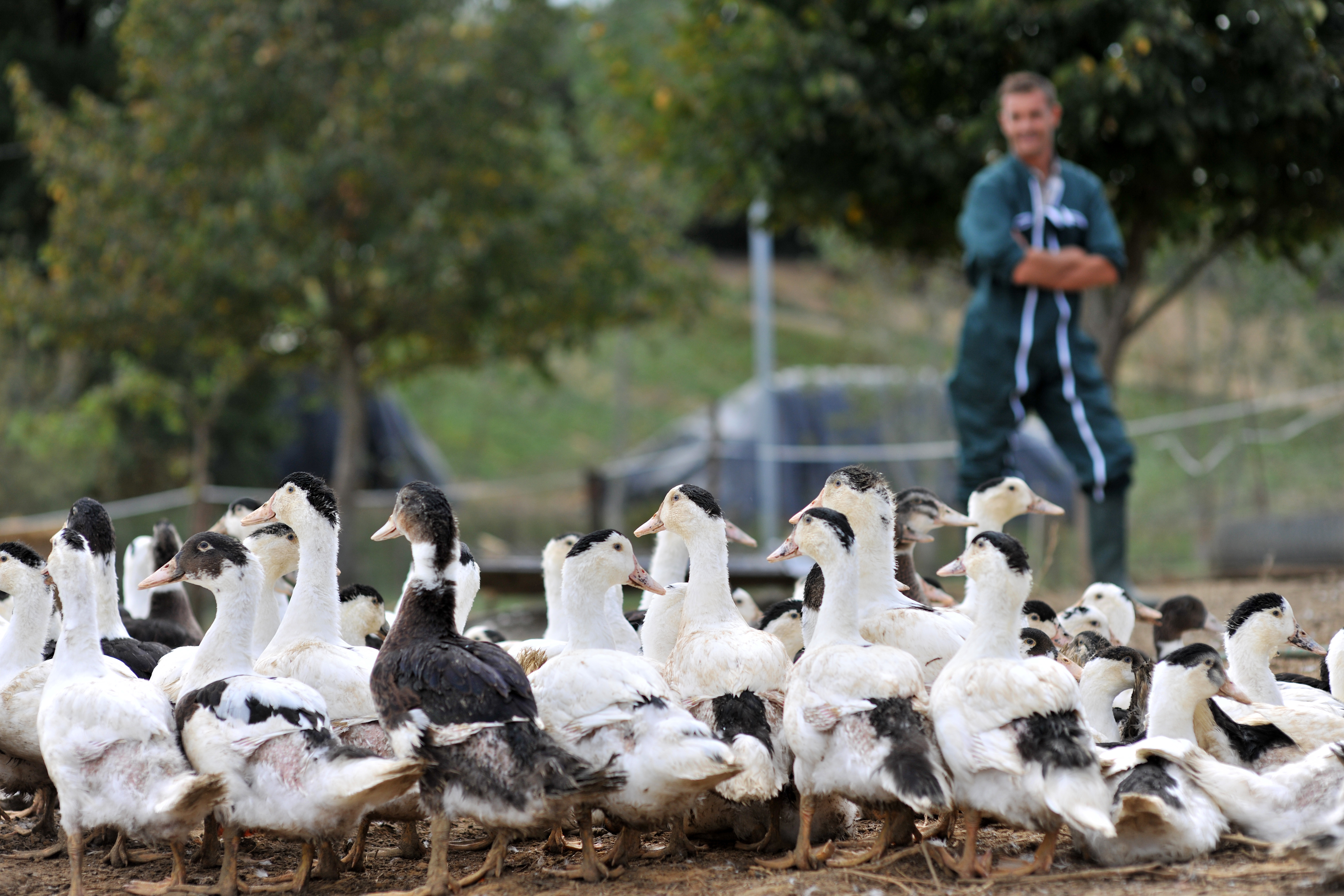



Why water access is the secret to duck health
With migratory waterfowl as its ancestor, it’s not surprising that water is still a very important resource for farmed ducks.Pekin ducks are the most commonly farmed breed of meat duck, and are derived from the wild mallard. With migratory waterfowl as its ancestor, it’s not surprising that water is still a very important resource for farmed ducks. Research has shown that ducks prefer to drink from an open water source, such as a trough or cup drinker, rather than a nipple drinker, and will work hard to gain access to open water.
They rely on water for maintaining their plumage in good condition and keeping their eyes and nostrils clean. They do this by submerging their heads under water, and thus need an open water source for optimal preening conditions. Ducks also use water to regulate their body temperature during periods of heat stress, and access to open water is especially important for ducks farmed in tropical conditions.

There is a large body of scientific literature showing that access to open water is beneficial to duck welfare. However, providing this resource is an ongoing challenge for producers. In comparison to other poultry, ducks consume a lot of water and excrete a lot of water. In fact, their faeces can consist of up to 90 percent water, which poses obvious difficulties in terms of keeping their litter dry.
Compounding this issue is the additional water which is splashed onto the floor during preening bouts, and open water sources can quickly result in a messy house with wet litter if not managed correctly. Wet litter causes poor foot health, and is associated with hyperkeratosis and necrosis of the footpads. In addition, the tendency for ducks to defecate in water leads to open water sources quickly becoming fouled with droppings and high levels of bacterial contamination. Some research associates this with poor health in ducks, while other research does not. Contaminated water does, however, pose a problem for waste management, and treating this water may not comply with environmental-protection requirements.
Many studies have compared different methods of providing water to ducks to find a solution that is economic, hygienic and welfare friendly. Ducks prefer clean water to dirty water, and place a high value on water into which they can submerge their heads. While they will use deeper water for wading or swimming, these activities are of lesser value to ducks than head immersion, and the priority should be to provide them with water for bodily maintenance activities such as cleaning the eyes and nostrils.
Ducks in the USA are typically housed indoors on slats with access to nipple drinkers only, while ducks in the UK and Europe have access to litter and are required to have at least some access to open water. This access can be provided using features such as bell drinkers and modified cup drinkers, although there are also options for troughs, baths and showers to be provided.

A number of studies have compared these water sources to determine which is best in terms of duck health and behaviour, although this has not resulted in any clear solutions. In one study it was found that ducks housed with intermediate-sized water troughs (20cm wide) used twice as much water as those given access to wider troughs (50cm), but these ducks had better foot health and the water contained less microbiological contamination than water in the wide troughs. It has also been found that when ducks are provided with simultaneous access to baths, troughs and showers, they spent a similar amount of time using each, with a preference for using the showers. However, these options still use large volumes of water and must be placed over slats or other areas with good drainage to avoid wet litter.
The development of modified drinking cups for use with ducks may offer a solution to many of these problems. These modified drinking cups (such as the Pekino, produced by Big Dutchman) contain a deep cup (10cm) in which the ducks can fully immerse their heads. A rim around the edge of the cup reduces the amount of water spillage, and water flow is maintained so that the cup does not empty during use. When compared to nipple drinkers, these modified cups have been associated with cleaner plumage and better eye and nostril health. When provided with cups by researchers, ducks showed a clear preference for the cups over the nipples, and used them to perform a wide variety of preening and drinking behaviours. The bacterial count was higher in the cups than in the nipple drinkers, but there were no negative effects on duck health reported. Unfortunately, foot health was still poor and this may have been due to excess water still reaching the litter.

These studies all emphasise the need for further refinement of the methods used to provide access to open water for commercial ducks. In the meantime, some of the negative impacts associated with access to open water can be reduced by:
- providing access to water over slatted flooring rather than litter to improve litter quality;
- restricting the duration of water access, although the optimal duration of access for duck welfare and good hygiene has not yet been determined (it is vital that water access is provided for long enough so that all ducks can access the water without undue competition);
- providing access to water through the use of modified cup drinkers, possibly in combination with restricted durations of access to reduce the risk of wet litter.
As the global demand for duck meat and eggs increases, so too does the need for a solution to this problem. An optimal farming system is one that can provide ducks with access to open water so that they may fulfil their behavioural requirements to ensure good welfare, and in a manner that is economical and ensures good flock health for the producer. This dilemma has existed for over 20 years, however, research in this area is increasing, and the development of targeted commercial products (such as modified cup drinkers) are promising developments.
| References | ||||
|---|---|---|---|---|
| Liste, G, Kirkden, RD, Broom, DM | ||||
| (2012) | A commercial trial evaluating three open water sources for farmed ducks: effects on health and production. British Poultry Science | 53 (5) | ||
| Liste, G, Kirkden, RD, Broom, DM | ||||
| (2013) | A commercial trial evaluating three open water sources for farmed ducks: effects on water usage and water quality. British Poultry Science | 54 (1) | ||
| Rauch, E, et al. | ||||
| (2016) | Animal hygiene, water quality and animal health using round drinkers as an animal-friendly water supply for Pekin ducks under practical conditions. Berliner und Münchener Tierärztliche Wochenschrift | 129 (1/2) | ||
| Waitt, C, Jones, T, Dawkins, MS | ||||
| (2009) | Behaviour, synchrony and welfare of Pekin ducks in relation to water use. Applied Animal Behaviour Science | 121 (3/4) |









